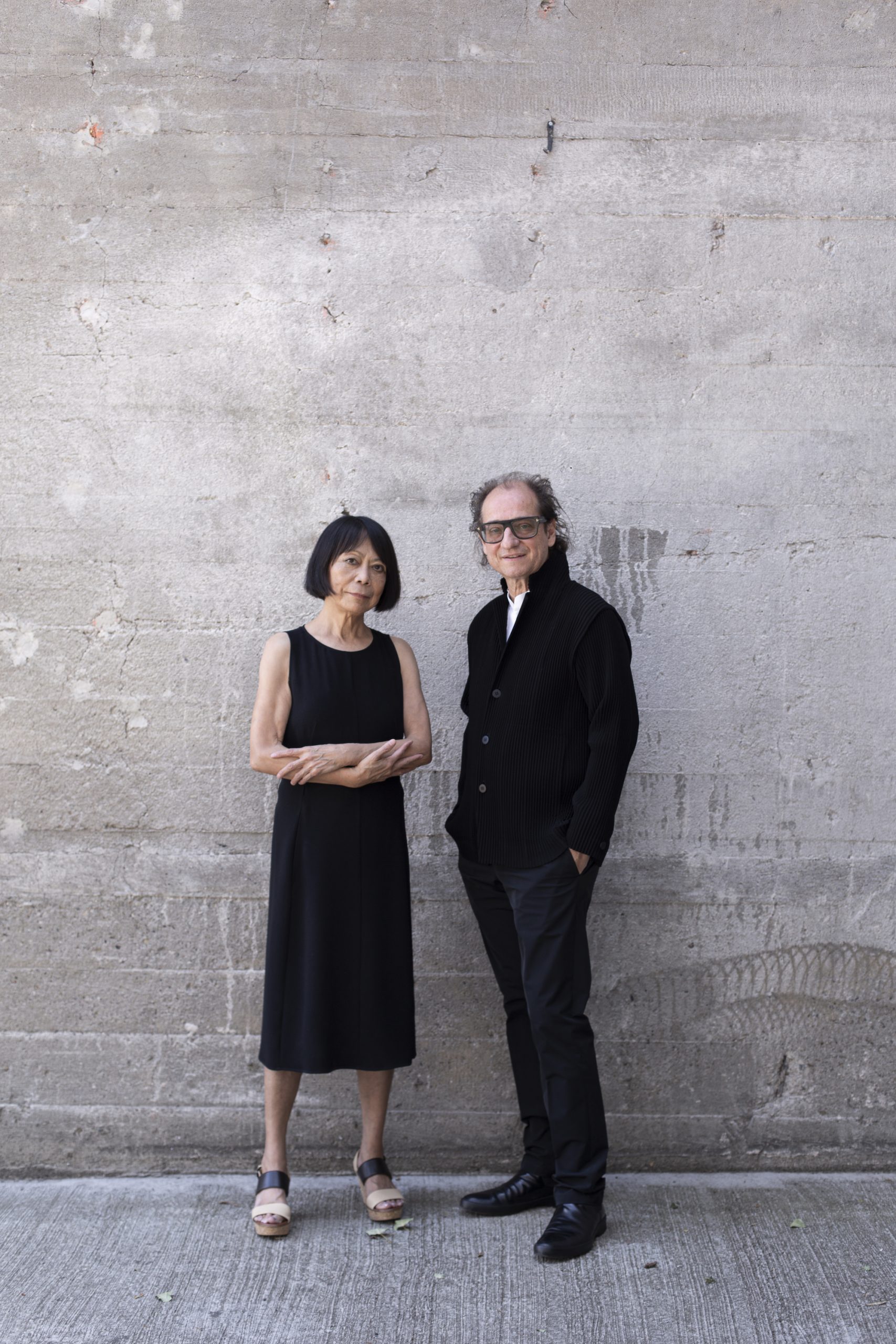
Photography Wai Kung. Courtesy the artist.
©Leiko Ikemura and The Feuerle Collection
Leiko Ikemura
Painter, sculptor. Served as a professor at UDK (the Berlin University of the Arts) from 1991 to 2015. Awarded the August Macke Prize in 2009. Since 2014, she has been a visiting professor at the Joshibi University of Art and Design Graduate School. She also received an Art Encouragement Prize in 2020. Some recent notable solo exhibitions include “Toward New Seas” at the Basel Art Museum, Switzerland, in 2019, and “Our Planet – Earth & Stars” at the National Art Center, Tokyo, in the same year.
Based in Berlin and Cologne, Japanese artist Leiko Ikemura hosted a solo exhibition “When Animals Become Art” at the Feuerle Collection gallery in Berlin. What is the message behind the exhibition that uses animals as a medium for artistic expression, featuring elements such as glass sculptures of rabbits and vintage Steiff plush toys?
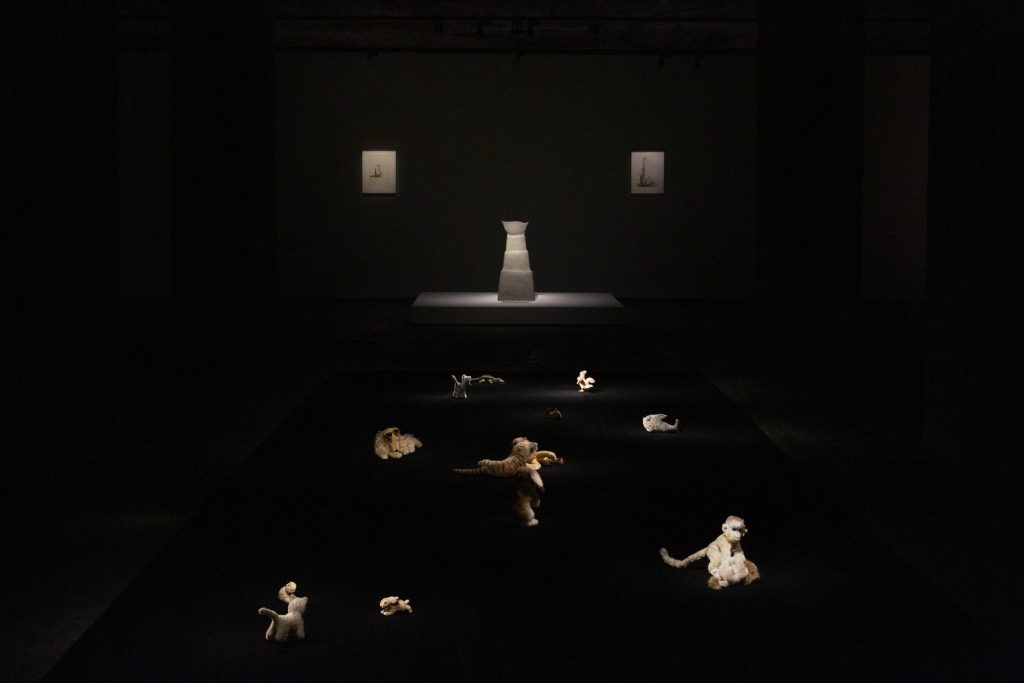
Photography Wai Kung.
Courtesy the artist.
©Leiko Ikemura and The Feuerle Collection
Review the exhibition “When Animals Become Art: Leiko IKEMURA” in Berlin.
Upon entering, one is enveloped in a sacred ambiance, experiencing an enigmatic feeling akin to a soulful cleanse. Situated in Berlin’s Kreuzberg district, the Feuerle Collection gallery holds a distinctive allure for me, resembling a unique and almost sacred space.
With an expansive land area comparable to that of a museum, this gallery has been skillfully converted by the British architect John Pawson from the remains of an air-raid shelter utilized for information and communication during World War II. Darkness shrouded the bare concrete and the perfect use of minimal light skillfully highlights the Art pieces.
Within a setting radiating a minimal yet reverent ambiance, the displays feature Khmer sculptures spanning the 7th to the 13th centuries, furniture utilized by Chinese emperors from 200 BC to the 17th century, photographs by Araki Nobuyoshi, and artworks by Cristina Iglesias. This creates a compelling contrast between classical and contemporary art.


Photography Nic Tenwiggenhorn
© NicTenwiggenhorn / VG Bild-Kunst,Bonn
At The Feuerle Collection, alongside the permanent exhibition, there is an irregularly presented special exhibition known as “SILK ROOM.” The current guest artist for this exhibition is Ikemura, a globally recognized and influential contemporary Japanese artist. The ongoing exhibition titled “When Animals Become Art” is curated by the founder, Désiré Feuerle. In the 1970s, Ikemura, a leading Japanese contemporary artist, boldly ventured to Spain when the presence of female artists on the international stage was still limited. Subsequently, she relocated to Switzerland and organized her inaugural group exhibition in Bonn and Nuremberg in Germany in 1983. Serving as a professor at UDK (Berlin University of the Arts) from 1990 to 2016, she has continued to impart knowledge since 2014 at Joshibi University of Art and Design in Tokyo. Over the years, Ikemura has conducted over 700 solo and group exhibitions in more than 29 countries worldwide. Her artworks grace the collections of esteemed institutions such as the State Museums of Berlin and the National Museum of Modern Art, Tokyo.
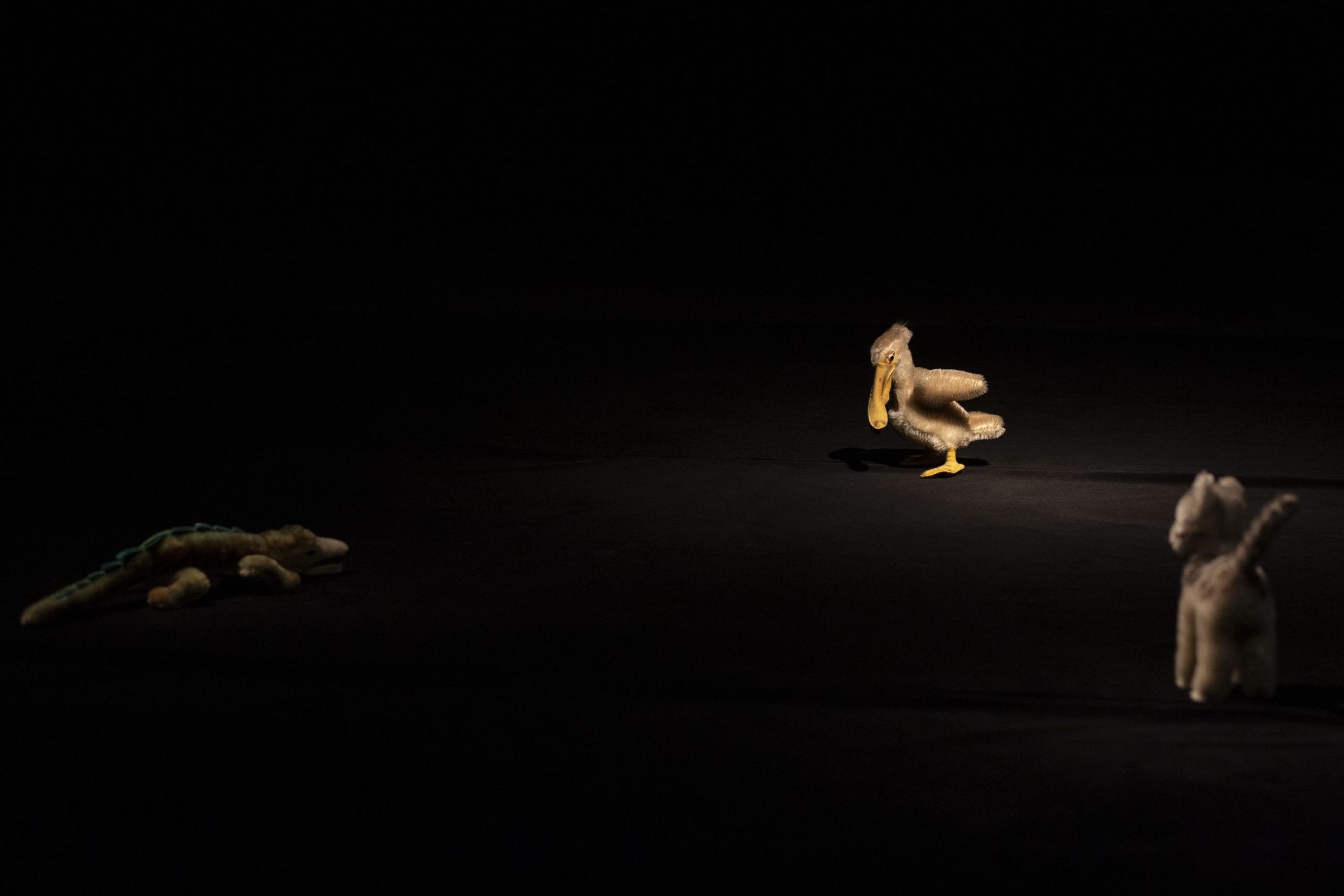
Photography Wai Kung. Courtesy the artist.
©Leiko Ikemura and The Feuerle Collection
The second edition of the “SILK ROOM” series, titled “When Animals Become Art,” presents a carefully chosen collection of artworks from Ikemura’s archive spanning from 1990 to 2022. Spread across a 400-square-meter exhibition space, the showcase adopts a distinctive presentation approach, highlighting a unique arrangement of rare and precious vintage Steiff plush toys (crafted by the renowned German teddy bear manufacturer) personally collected by Ikemura.
What is the message behind the title “When Animals Become Art”?. Ikemura stated as follows:
“While recognizing the presence of animalistic qualities in humans, I contemplate the idea that animals also exhibit human behaviors and strive to convey this notion. Fundamentally, humans and animals coexist. I hold the belief that animals, far from being mere entities, are inherently more interconnected with us despite the disparities. Take the ‘fox’ as an example. While the conventional notion of a fox may seem straightforward, in narratives, a fox can undergo transformations, at times assuming the guise of a woman. The enigmatic tales of foxes and their appearances trace back to mythology. The ‘rabbit’ serves as another instance of an animal carrying profound significance. I have a fondness for the Japanese pronunciation of rabbit (Usagi,) and its elegance is mirrored in sculptural form. The rabbit’s prominent ears function akin to antennas, and its zigzagging movements signify unpredictable skills, embodying a refined form of self-defense.”

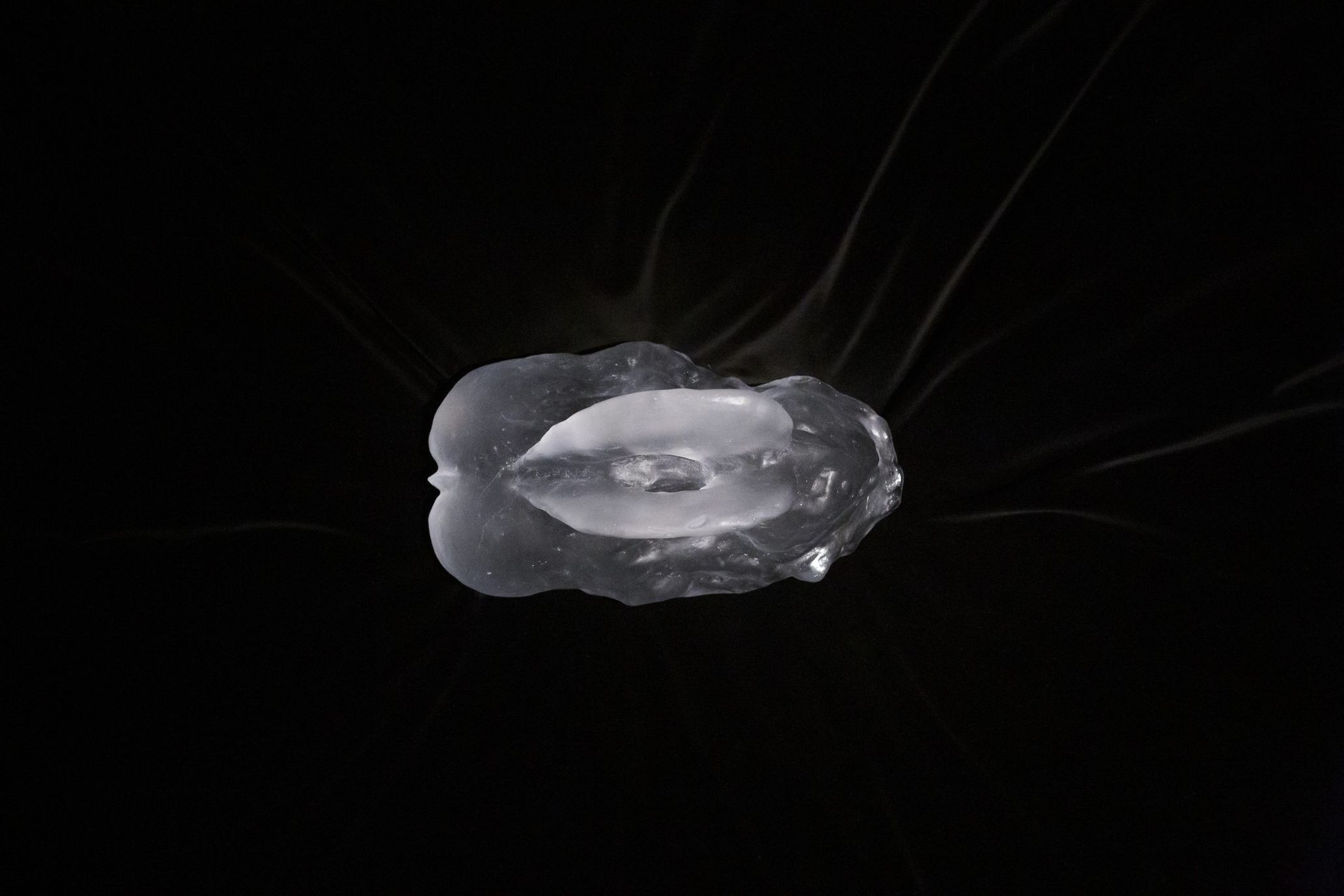
Photography Wai Kung. Courtesy the artist.
©Leiko Ikemura and The Feuerle Collection
Displayed in parallel with her original creations are the rare vintage animals from Steiff. Ikemura has received these as gifts, found them at antique markets or in store windows over the years, and has been collecting them. She is fascinated by the trademark button, the “Button in Ear,” attached to their left ears. However, some of these plush toys have a sad story – once cherished and loved as someone’s precious possession, they were eventually abandoned. As time passed, these vintage toys exude a sense of luxury yet carry a somewhat melancholic appearance, perhaps due to the poignant narratives behind them.
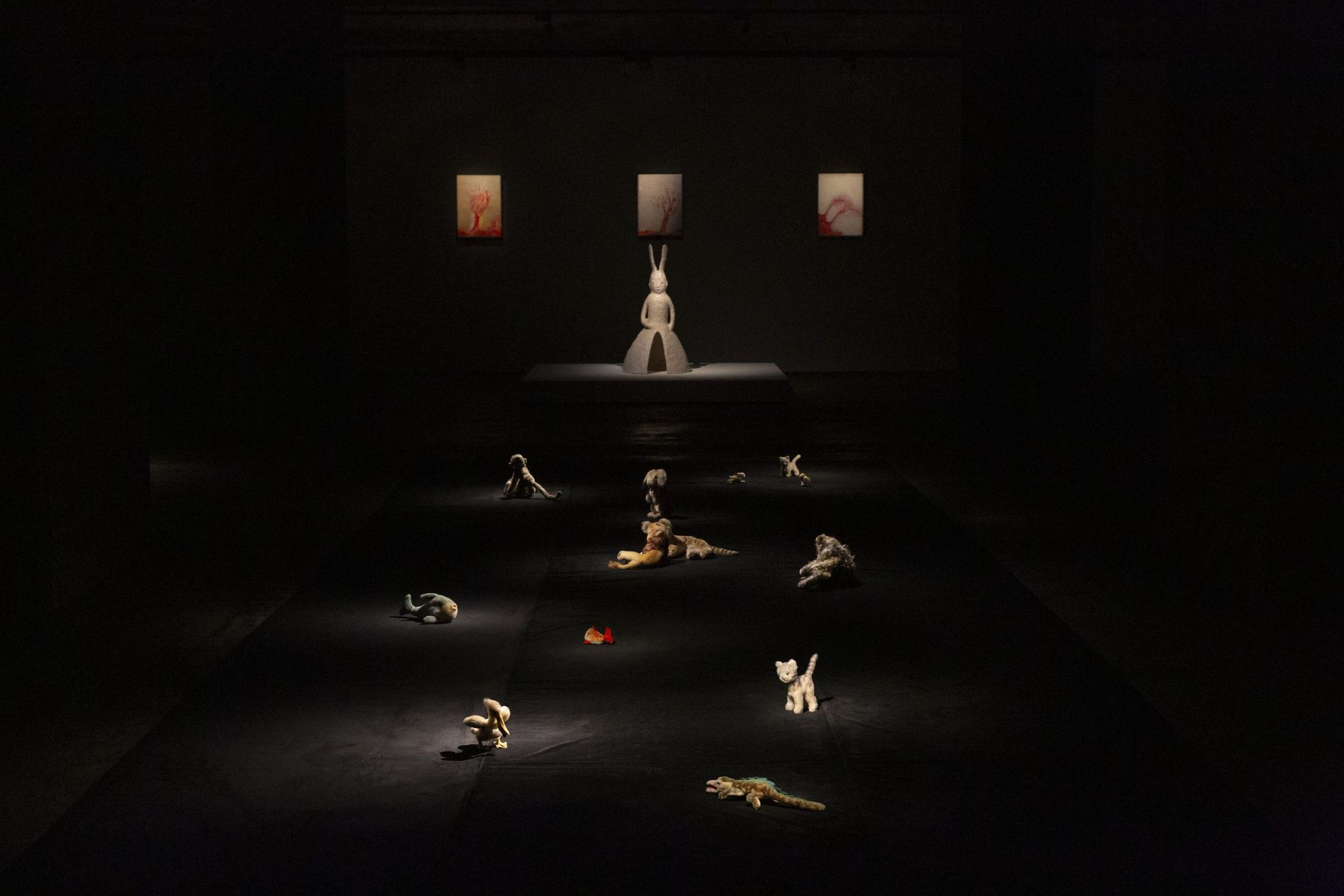
Courtesy the artist.
©Leiko Ikemura and The Feuerle Collection
Désiré Feuerle, a long-time friend of Ikemura, revealed the background that led to the exhibition: “While sharing a dinner at Leiko’s home, I noticed that the Steiff animals she had been collecting over the years possessed a childlike playfulness and soul, mirroring her own artworks. The distinction lies in their visually twisted, somewhat erotic, and sensual nature. Capturing this essence, I conceived the idea of curating this exhibition at the Feuerle Collection. Through a deliberate exploration of the sensuality inherent in both animals and women, the significance of unfiltered joy in animals became apparent. By observing animals, sensing their souls, and concurrently emphasizing eros, we can uncover the connection with our own primal, animalistic aspects as humans.”
The long-running exhibition “When Animals Become Art,” which began in July, concluded on January 7, 2024. With every visit to The Feuerle Collection, one can expect to encounter new discoveries and evoke emotions previously unfelt. We also ensure distinctive experiences for both special exhibitions and permanent collections. Moreover, the special exhibition “SILK ROOM” not only showcases curated exhibits by guest artists but also hosts diverse programs, including performances, artist talks, screenings, and concerts, serving as a platform for the endeavors of Japanese artists and creators.
Translation Takahiro Kanazawa

